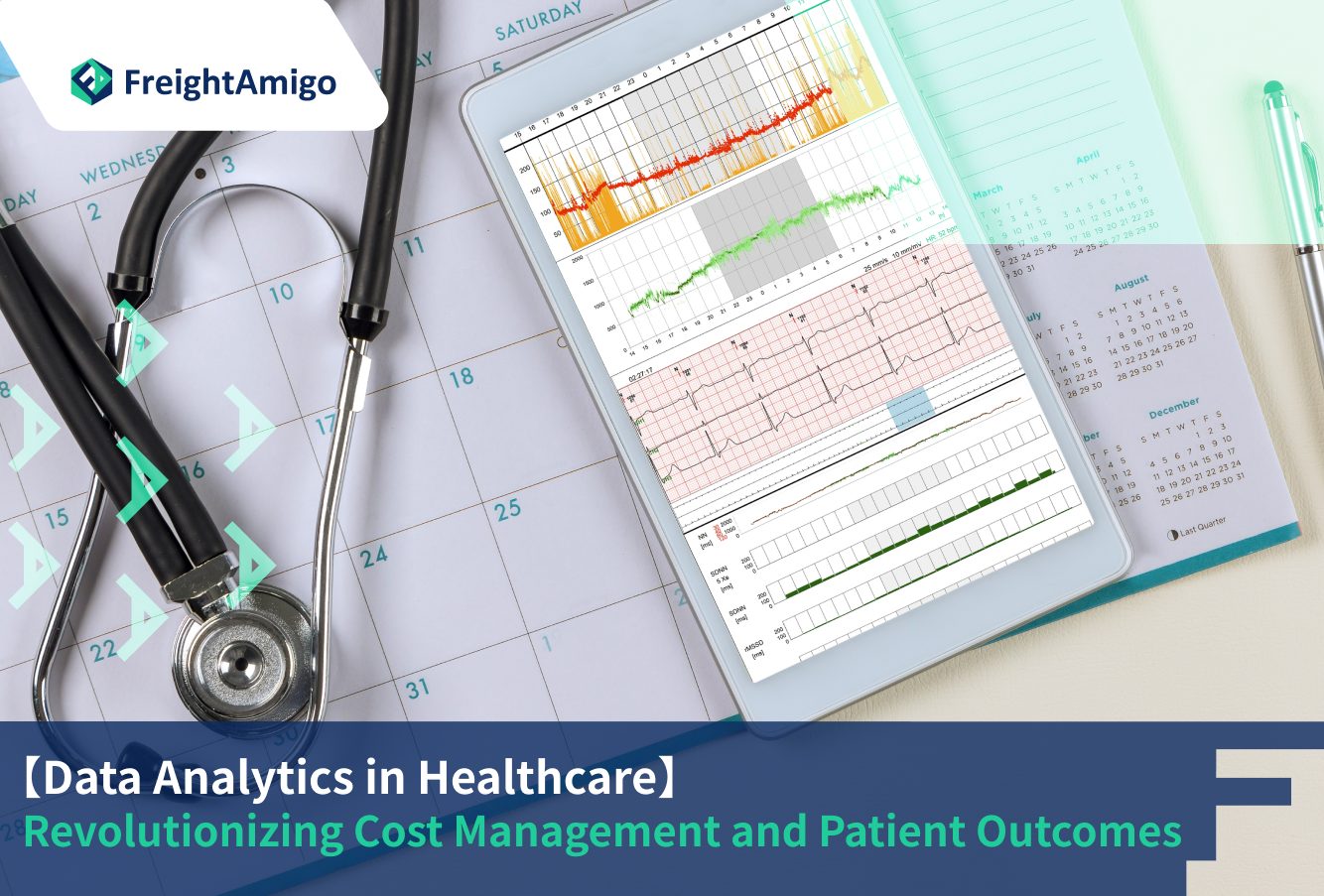In today’s rapidly evolving healthcare landscape, controlling costs while delivering high-quality care has become a significant challenge for healthcare organizations. Rising healthcare costs and the need for improved patient outcomes have necessitated the adoption of innovative solutions. Data analytics has emerged as a powerful tool in the healthcare industry, enabling payers to manage costs effectively and enhance patient outcomes. By harnessing the power of data, healthcare payers can identify cost-saving opportunities, improve care coordination, and optimize network performance. In this article, we will explore the different ways data analytics is transforming the healthcare industry by maximizing cost efficiency and improving patient outcomes.
Latest update on 28 February, 2024 by Caspian Ng – Marketing Analyst at FreightAmigo
Want to compare the best Express, Air Freight, Sea Freight, Rail Freight & Trucking rates so as to have better control on cost?
The Power of Data Analytics in Healthcare
Data analytics plays a critical role in managing healthcare costs by providing actionable insights based on vast amounts of patient data. By analyzing electronic health records, claims data, and other sources, payers can identify high-risk patients and target interventions to prevent or manage chronic diseases and costly health conditions. Additionally, data analytics enables payers to improve care coordination by identifying gaps in care and working with providers to enhance patient outcomes. By reducing unnecessary procedures and optimizing pharmacy costs, payers can achieve significant cost savings without compromising the quality of care. Furthermore, data analytics helps payers identify providers who deliver high-quality care at lower costs, allowing them to steer patients towards these providers and reduce overall healthcare expenses.
Overcoming Challenges in Data Analytics Implementation
While data analytics offers immense potential in cost management and improving patient outcomes, healthcare payers face several challenges in its implementation. One major hurdle is the presence of data silos, where healthcare data is fragmented and stored in different systems. Breaking down these silos and integrating data from various sources is crucial for effective data analytics implementation. Additionally, healthcare data is often messy and incomplete, making it challenging to draw meaningful insights. Ensuring data quality through robust data quality tools and strategies is essential. Moreover, many healthcare payers lack the in-house expertise needed to analyze and interpret data effectively. Investing in training programs and partnerships with analytics experts is crucial to overcome this challenge.
Leveraging Data Analytics for Cost Management
Data analytics offers several strategies for healthcare payers to maximize cost efficiency while improving patient outcomes. Let’s explore some of these strategies in detail:
- Identifying High-Cost Patients
By analyzing patient data, payers can identify individuals who are at risk for high healthcare costs. This proactive approach allows payers to provide preventative care and care coordination, helping to avoid costly hospitalizations and procedures in the long run.
- Reducing Unnecessary Procedures
Data analytics can help identify instances where unnecessary procedures are being performed. By reducing these procedures, payers can save money while also improving patient outcomes.
- Improving Care Coordination
Analyzing data from various healthcare providers allows payers to identify gaps in care coordination and work towards filling those gaps. This can help reduce duplicate procedures and improve patient outcomes.
- Predictive Analytics
Payers can use predictive analytics to identify patients who are at risk for certain health conditions or complications. By identifying these patients early, payers can intervene with preventative care to avoid costly procedures down the line.
- Fraud Detection
Data analytics can be used to identify instances of fraud and abuse in the healthcare system. By detecting fraudulent claims, payers can save money and ensure that resources are being used appropriately.
The Future of Data Analytics in Healthcare
As technology continues to advance, the future of data analytics in healthcare looks promising. The emergence of artificial intelligence (AI) and machine learning (ML) algorithms will further enhance the capabilities of data analytics in cost management and improving patient outcomes. AI-powered predictive analytics models will enable payers to identify high-cost patients with even greater accuracy, leading to more targeted interventions and cost savings. Additionally, advancements in data integration and interoperability will help overcome the challenge of data silos, allowing for a more comprehensive and holistic analysis of patient data. Moreover, the rise of blockchain technology will enhance data security and privacy, ensuring the integrity of sensitive healthcare information.
Conclusion
Data analytics is revolutionizing the healthcare industry by transforming cost management and improving patient outcomes. By leveraging the power of data, healthcare payers can identify cost-saving opportunities, reduce unnecessary procedures, optimize operations, and enhance network performance. Overcoming challenges in data analytics implementation is crucial to fully harness its potential. As technology continues to evolve, the future of data analytics in healthcare holds great promise, with AI, ML, and blockchain playing pivotal roles. Platform services allow you to experience the power of data and the power of digital transformation.
To maximize cost efficiency and improving patient outcomes, visit the FreightAmigo website to overcome the challenges of implementing data analytics in daily operation and realize its full potential.
Read More:
A Comprehensive Shipping Guide for Personal Care & Cosmetics
【Personal Care Packaging】 The Ultimate Guide for Shipping Cosmetics
【Transforming Supply Chain Finance】 The Revolutionary Impact of FinTech
If you have any inquiries on logistics/supply chain, feel free to contact FreightAmigo now:
Chat with us online | Hotline: +852 28121686 | WhatsApp: +852 27467829









































